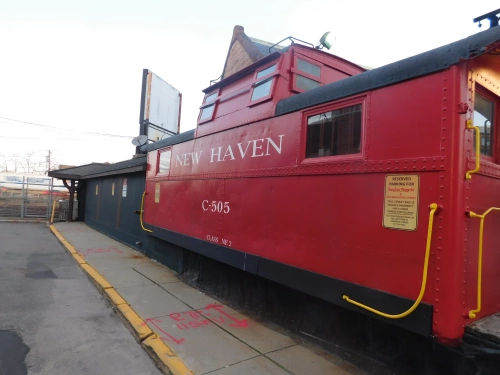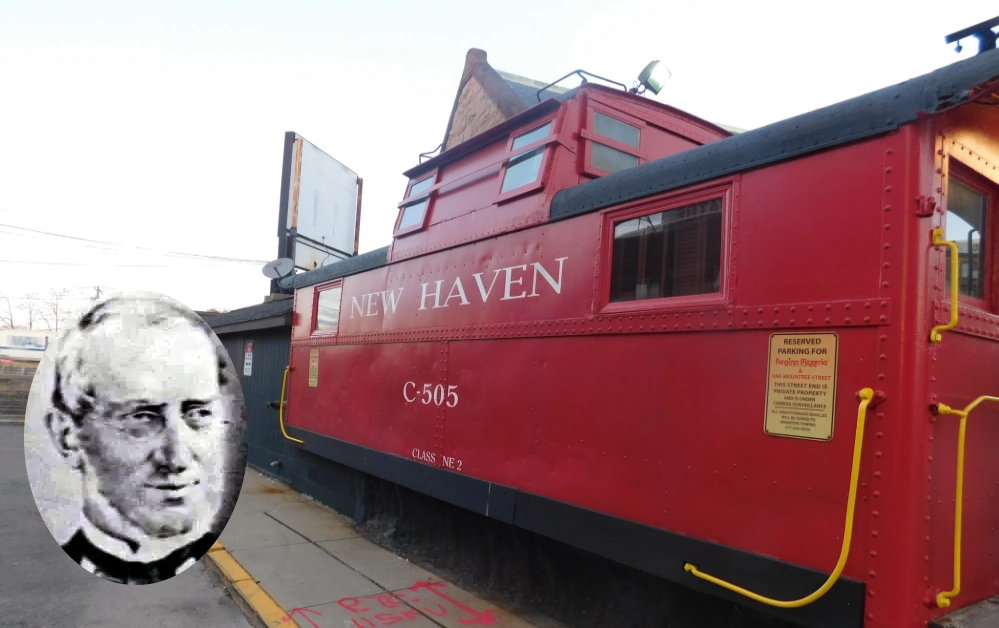Robert Schuyler was one of the most respected men of his era, the last person likely to pull off one of the greatest swindles in Wall Street history. But in 1853, that’s exactly what Robert Schuyler did.
He came from an illustrious family, grandson of Gen. Philip Schuyler, hero of the Battle of Saratoga, and nephew of Alexander Hamilton. His relatives included the landowning Beekmans and Van Rensselaers, New York nobility.
When the organizers of the new New York & New Haven Railroad went to look for a president, they chose Robert Schuyler because he represented the last word in respectability and financial responsibility.
Years later all hell broke loose when it turned out that he sold thousands of shares of bogus stock, kept three sets of books and stole $137,527.98.
“If Robert Schuyler is capable of such a wrong,” editorialized a newspaper, “then no one is to be trusted.”
But he was capable of such a wrong, one that ranked with the Bernie Madoff scandal.
Robert Schuyler
Robert Schuyler was born on Sept. 16, 1798 in Rhinebeck, N.Y., to an aristocratic family with vast semi-feudal landholdings in the Hudson Valley. A man of culture and refinement, he cofounded New York’s Union Club.
After graduating from Harvard, Robert Schuyler made the successful transition into commerce, starting his career with steamboats. By 1846 he and his brother George formed R. & G. L. Schuyler, an investment firm specializing in railroads.
At one time, Robert Schuyler served as president of five railroads, including the New York & New Haven Railroad, the Harlem, the Illinois Central, the Rensselaer & Saratoga and the Sangamon & Morgan Railroads. People called him the Railroad King.
The directors of the New York & New Haven completely entrusted the railroad’s financial affairs to him as president and sole transfer agent.
Disasters
In May of 1853, the New York & New Haven Railroad train plunged into Norwalk Harbor and killed about 50 people. The dramatic railroad derailment was by far the country’s worst.
President Robert Schuyler took a little bit of the blame for the disaster. The Connecticut Legislature, assuming Schuyler spread himself too thin, passed a law forbidding anyone to hold more than one railroad presidency at a time. He resigned several of his presidencies, putting his brother in charge of one.
Despite the tremendous loss of life, the Norwalk tragedy didn’t cause the railroad undue financial harm.
Then one year later, a second disaster struck the New York & New Haven when the stock prices began to plunge. In less than five weeks it dropped from $93 to $73.5, suggesting some insiders knew about the stock manipulation going on.
The railroad board tried to contact Robert Schuyler, who claimed he had fallen ill with a bad hemorrhage of the lungs. The New York Herald, though, on July 6, 1854 reported, “Mr. Schuyler has not been confined to his house by sickness lately….He has gone to Canada or some other cool place. New York was too hot to hold him.”
Robert Schuyler had, in fact, fled to France.
Swindler
Schuyler’s lawyer had already handed the railroad directors a letter of resignation. “Your attention to the stock ledgers of your Company is essential as you will find there is much that is wrong,” wrote Schuyler.
It turned out that Robert Schuyler, as sole transfer agent, had sold 19,540 shares in unauthorized stock certificates worth about $54 million today.
At first, the board thought Robert Schuyler had started selling bogus stock after the Norwalk accident. But then the directors learned he’d been doing it much earlier.
He had also maintained three sets of books kept by three different clerks, none of whom knew what the others were doing. He paid damage claims from the Norwalk accident by taking money from railroad accounts in cash and giving out notes signed by him as president.

Allston (New York, New Haven and Hartford Railroad station)
Confusion reigned upon the discovery of the swindle because it was so hard to tell who held the bogus stock and who held genuine shares.
The first official meeting after the discovery of the fraud lapsed into chaos. Anyone who tried to be heard got shouted down by those demanding how many shares he held and where they came from. The meeting adjourned.
Stockholders did manage to elect a new slate of officers. And after 10 years of litigation, the court finally ruled that the railroad had to cover all losses.
Trouble Signs
How had people missed the signs of Robert Schuyler’s misdeeds? In hindsight, warning signs abounded.
The New York Herald had received an anonymous letter asking it to demand the board investigate Schuyler. But the paper ignored the letter because of its anonymous author.
And then there was Schuyler’s personal life. He had lived as a bachelor, but he had a family of six children by a woman he hadn’t married and who lived in a separate household. Then a minister proposed to his oldest daughter. To his horror, he discovered she was illegitimate. Robert Schuyler acceded to the minister’s demands and married the mother of his children.
Soon after the news broke about Schuyler’s swindle, the American Railroad Journal carried an editorial claiming not to be surprised. “His reputation for possessing business qualities of a high order, the influential circle in which he moved, and the unlimited confidence which he enjoyed, gave him a paramount voice in the management of numerous schemes, wrote the Journal.” But, it continued, ‘a blight always seemed to rest on everything he touched.’
In conclusion, the Journal had advised investors to stay away from railroad schemes in which Schuyler was involved. “…we took it for granted that he would rob any project of which he had control of whatever vitality he possessed.”
Death in Paris
Robert Schuyler supposedly died in France on Nov. 15, 1855, a little more than a year after the revelations about his mammoth swindle. But mystery surrounded his death as well. A classmate in 1857 wrote to the Harvard Librarian doubting that he had died. A coffin had arrived from France, and a funeral took place in New York, “but I could not find that anybody saw the body or identified it. It may have been a sham.”
With thanks to The Great Schuyler Stock Fraud by Robert B. Shaw and The Strange Case of Robert Schuyler by Sidney Withington.
Images: Allston station by Adam Moss via Flickr, CC By-SA 2.0.
This story was updated in 2023.


